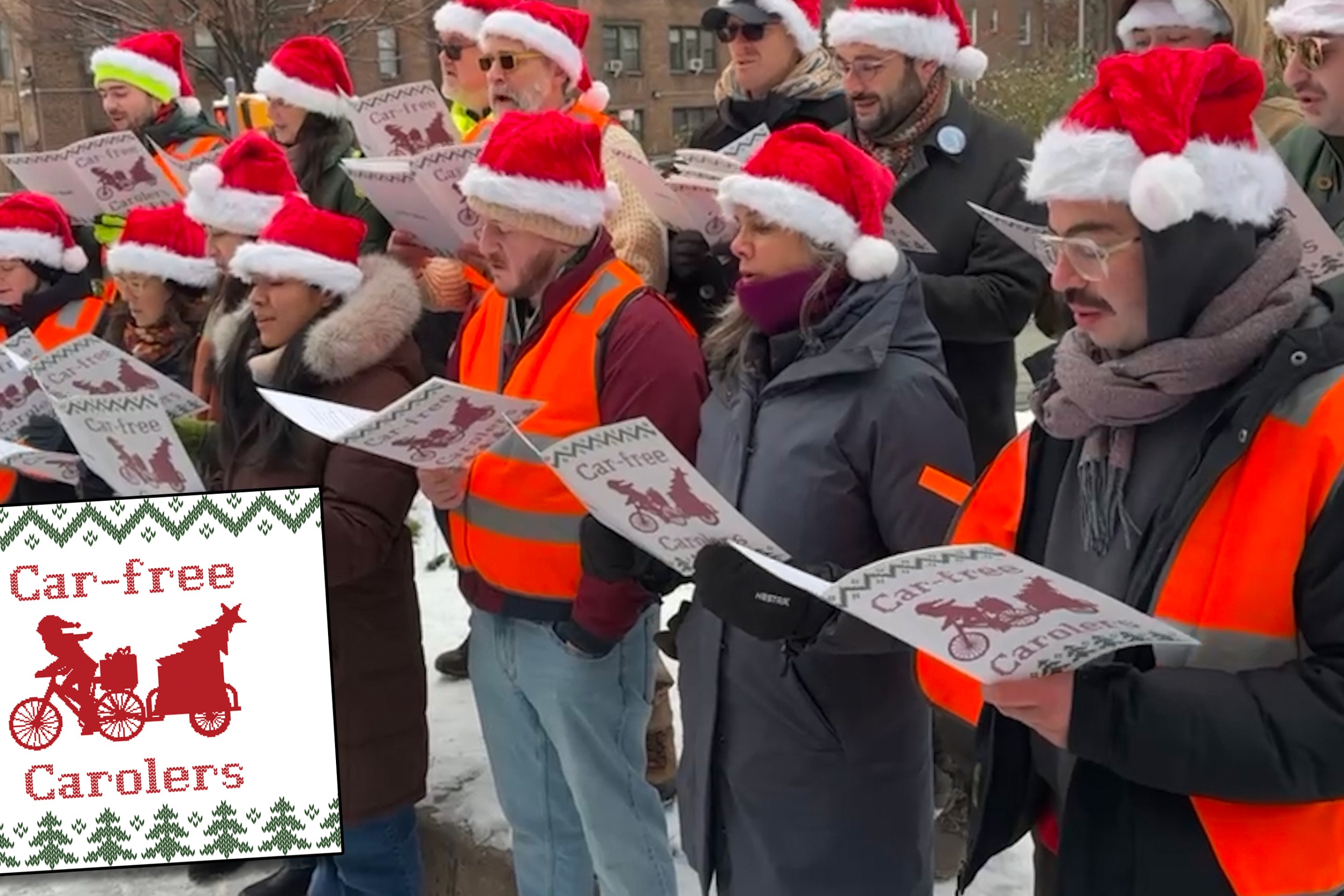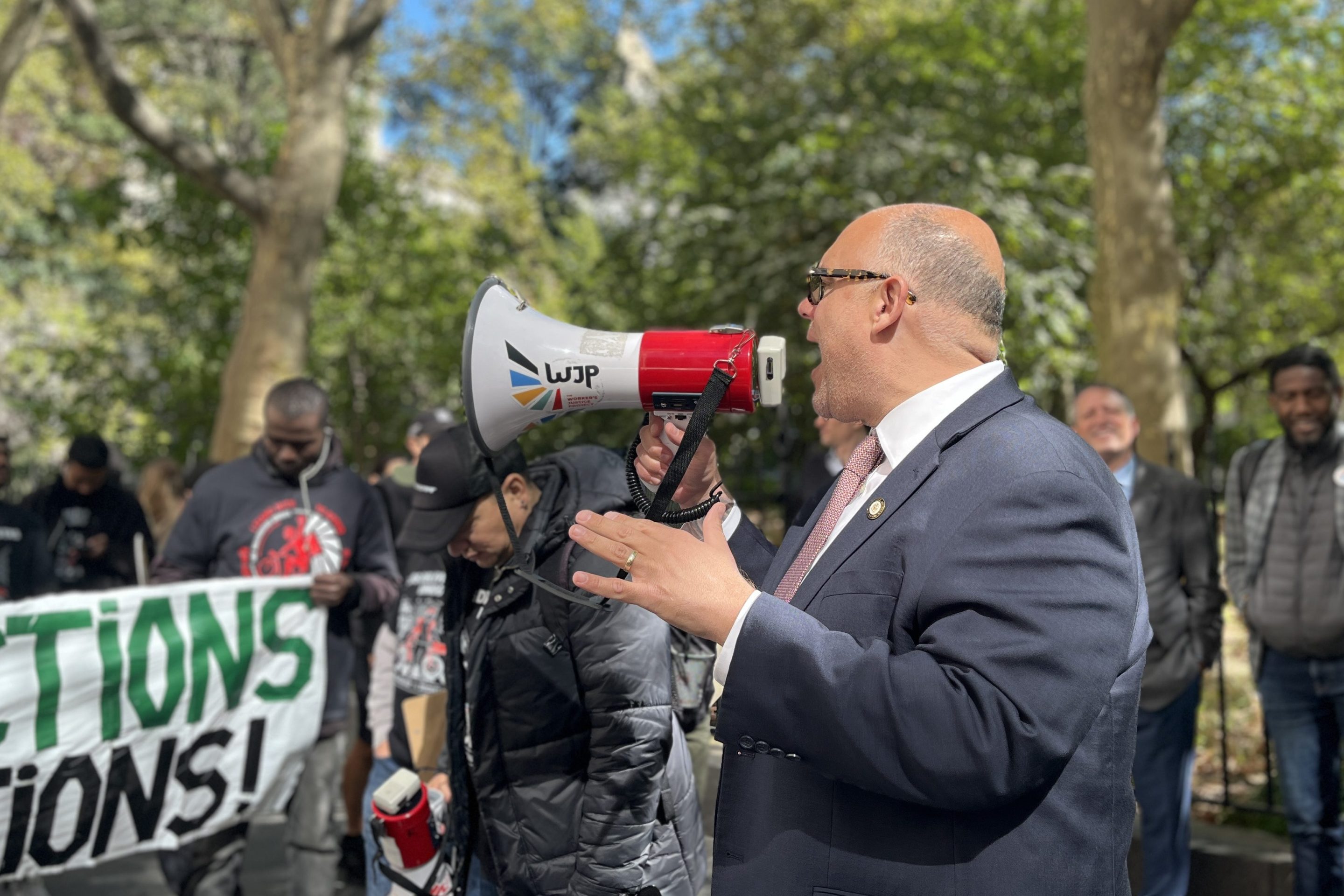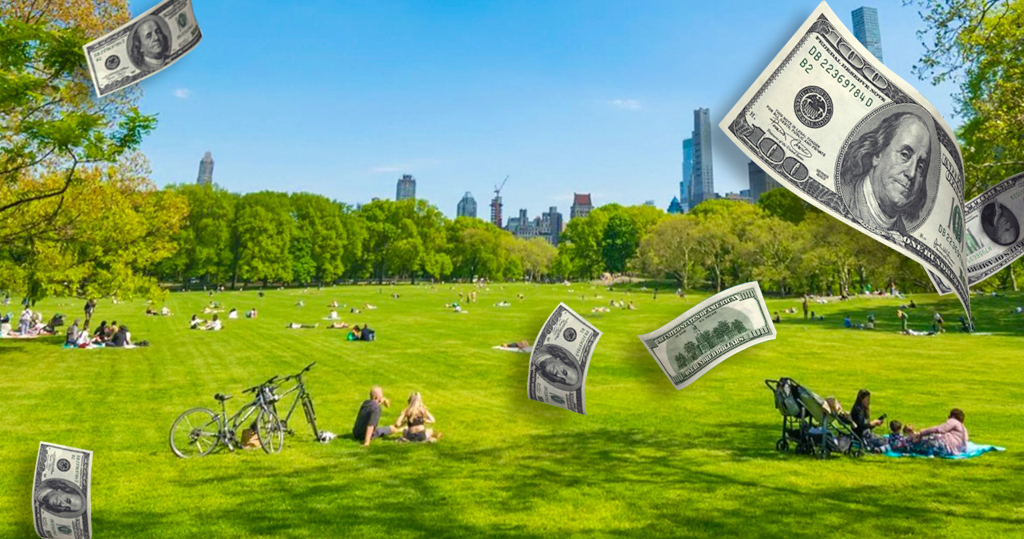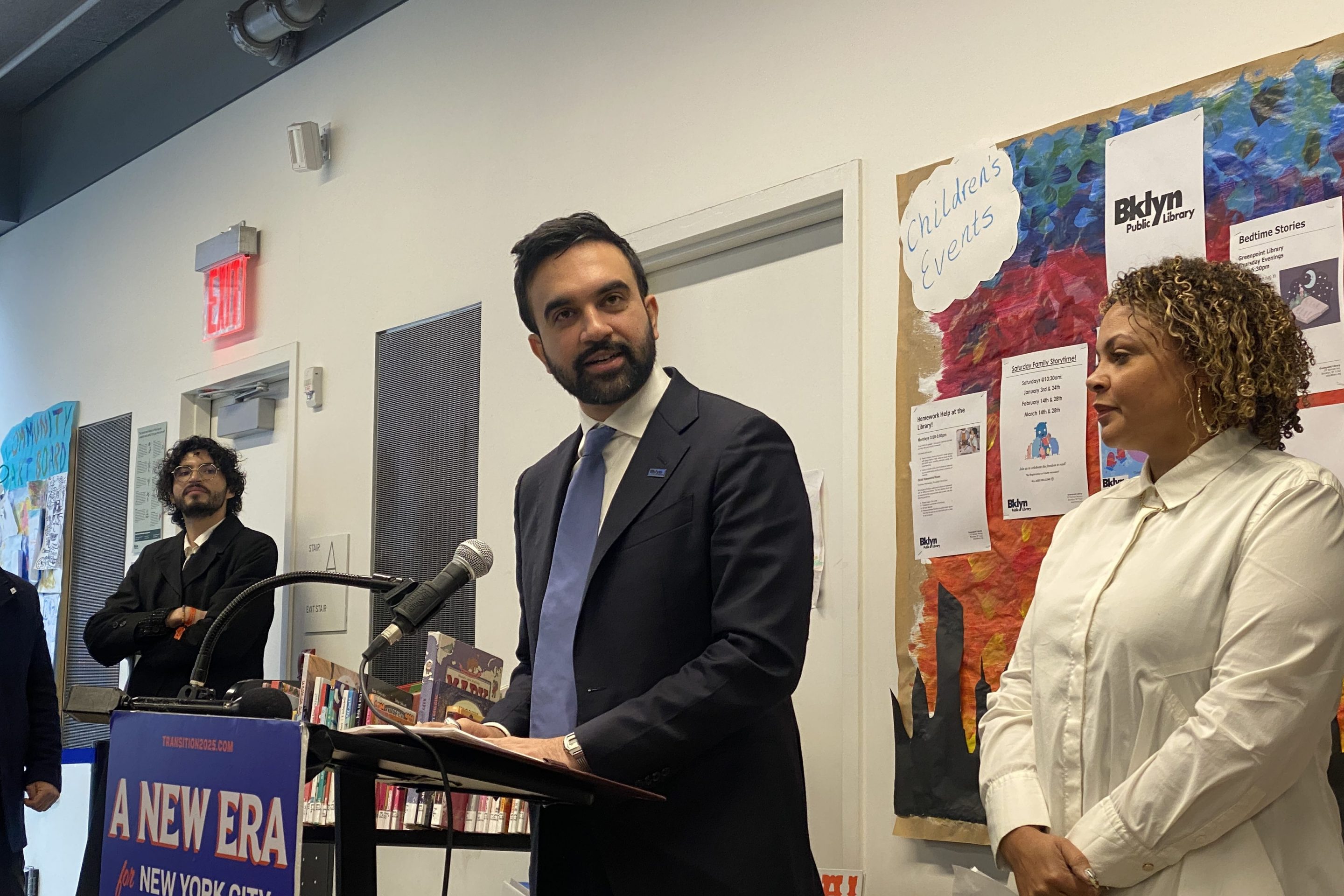After rallying on the steps of City Hall this afternoon, Transportation Alternatives delivered 2,500 handwritten letters urging Mayor Bloomberg to complete the protected bike lanes on First and Second Avenues. Joined by elected officials and more than forty supporters, T.A. called on Bloomberg to fulfill the promise of safe walking and cycling on Manhattan's East Side and to complete the bike and pedestrian improvements up to 125th Street.
T.A. Executive Director Paul Steely White said he's urging the city to complete the corridor by the end of next year. To meet that goal, he said, an announcement from the city needs to come in the next six weeks or so.
A completed corridor has received strong support from the East Side. Before designs for First and Second were announced, 19 electeds signed a letter calling for protected bike and bus lanes for the length of the route. After the plan was first released with protected lanes from Houston to 125th, every community board along the corridor supported the design, said White.
The fight to complete the unfinished lanes has earned the endorsement of 39 organizations, including transportation and planning groups, environmental advocates, and public health organizations like the New York Academy of Medicine and the East Harlem Aging Improvement District.
Today, elected officials continued to press for safer cycling and walking. Assembly Member Brian Kavanagh said he was "calling on the city to finish what they started." The city had already budgeted funds for the full corridor's construction and received community approval for the full plans, said Kavanagh. "We don't want bike lanes to nowhere," he argued.
State Senator José Serrano argued that shifting street space from the automobile to biking and walking would improve health in his neighborhoods. "If we reduce carbon emissions along these stretches of First and Second," he said, "we can reduce asthma in East Harlem."
City Council Member Melissa Mark-Viverito highlighted the inequity of the city's approach to installing bike infrastructure. "Why should Midtown get the benefits of these bike lanes and pedestrian islands?" she asked.
Between 1998 and 2008, nearly 4,900 pedestrians and cyclists were injured or killed on First and Second Avenues between Houston and 125th Streets, according to data compiled by the state Department of Transportation. Most of those injuries and fatalities -- 72 percent -- took place on the unfinished stretch between 34th and 125th streets.
Rally participants spoke for those whose lives have been harmed or taken away on streets with very long crossing distances and no provision for safer cycling. Sabrina Bishop recalled coming home to New York City on August 19 excited to find the new bike lanes in front of her home downtown. Only one week later, however, she found herself waiting for her friend Bob Bowen to arrive. "He didn't show up," said Bishop. "He had been hit by a flatbed truck." That crash occurred at Second and 59th, where the promised bike infrastructure was not built. Bowen died on August 30.
Mt. Sinai pediatrician Kevin Chatham-Stevens highlighted the effect of East Harlem's street design on the community's children, who suffer the highest rates of asthma hospitalization in the city, as well as elevated obesity rates. "When I talk to them about cycling," he said, "they often say that they don't feel safe cycling in East Harlem due to speeding traffic and the lack of protected space." With protected lanes, he argued, it might be possible to increase physical activity in the neighborhood.





